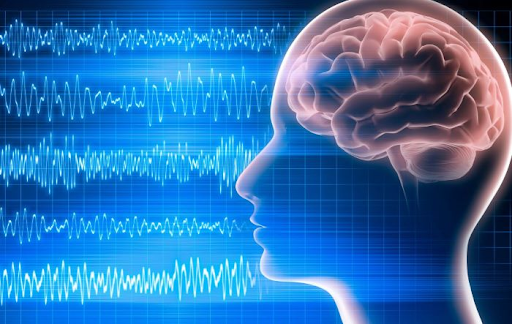Our Research

About Our Research
Dr. Jonathan Fawcett and the NeuroFog Lab delve into the intricate workings of human cognition, with a particular emphasis on understanding how individuals control unwanted thoughts and memories. Why can some people quickly dismiss an intrusive memory while others find themselves ruminating for days? Our research suggests that variation in mental control processes across individuals play a significant role. People who excel at suppressing unwanted memories in laboratory tasks often experience fewer intrusive thoughts in daily life. By exploring these processes in both general and clinical populations, we aim to unravel the cognitive and neural mechanisms underlying memory control.
In addition to studying the control of unwanted memories, the NeuroFog Lab also studies factors contributing to accurate (or inaccurate) eyewitness memory, including memory for bizarre or unexpected events (e.g., being robbed by a clown), and effective encoding processes such as the production effect. Our group is known for its dedication to advanced methods, and as such our laboratory is equipped with cutting-edge tools that enable us to probe the dynamics of human cognition.
Eye Tracking and Pupillometry
Using infrared light and high-precision cameras, we measure eye movement, gaze focus, and pupil dilation to assess cognitive engagement and attention. Changes in pupil size, for instance, provide a window into mental effort and focus during memory tasks.

Electroencephalography (EEG)
Recently integrated into our laboratory, EEG allows us to measure the brain’s electrical activity through non-invasive scalp electrodes. This technology helps us explore neural processes associated with memory control, offering insights into the temporal dynamics of cognitive processes.
Advanced Statistical Applications
In addition to cutting-edge equipment, our group also has expertise in a wide variety of advanced statistical techniques including Statistical Programming, Bayesian Statistics, Meta-analysis, Multilevel Modelling, Mixture Modelling and Computational Modelling. Dr. Fawcett is passionate about the application of advanced statistics to better understand psychological data and often holds workshops for local students on this topic.

Publications
- Fawcett, J. M., Taylor, T. L., Megla, E. & Maxcey, A. M. (2024). Active intentional and unintentional forgetting in the laboratory and everyday life. Nature Reviews Psychology, 1–13. https://doi.org/10.1038/s44159-024-00352-7
- McGrath, K. O.*, Lahey, C. A.*, Fawcett, E. J., & Fawcett, J. M. (2024). Doubting love: Identification and stigma toward relationship obsessive-compulsive disorder. Clinical Psychology, 1–13. https://doi.org/10.1080/13284207.2024.2400743
- Lahey, C. A.*, Fawcett, E. J., Garland, S. & Fawcett, J. M. (2024). Professional and Student Understanding of Harm Obsessive–Compulsive Disorder: A Vignette Study. Canadian Journal of Behavioural Science / Revue Canadienne Des Sciences Du Comportement. https://doi.org/10.1037/cbs0000425
- Whitridge, J. W.*, Huff, M. J., Ozubko, J. D., Bürkner, P. C., Lahey, C. D.* & Fawcett, J. M. (2024). Singing Does Not Necessarily Improve Memory More Than Reading Aloud: An Empirical and Meta-Analytic Investigation. Experimental Psychology, 71(1), 33–50. https://doi.org/10.1027/1618-3169/a000614
- Hourihan, K. L. & Fawcett, J. M. (2024). It’s All About That Case. Experimental Psychology, 71(2), 83–96. https://doi.org/10.1027/1618-3169/a000615 [Selected as Editor’s Choice for the Special Issue]
- Whitridge, J. W.*, Clark, C. A.*, Hourihan, K. L. & Fawcett, J. M. (2024). Generation (not production) improves the fidelity of visual representations in picture naming. Psychonomic Bulletin & Review, 1–10. https://doi.org/10.3758/s13423-024-02566-5
- Froude, A.M.*, Coles, A.R.L.*, Fawcett, E.J., Drakes, D.H.*, Harris, N. & Fawcett, J.M. (2024). The Prevalence of Cannabis Use Disorder in Attention-Deficit Hyperactivity Disorder: A Clinical Epidemiological Meta-Analysis. Journal of Psychiatric Research, 172, 391-401. https://doi.org/10.1016/j.jpsychires.2024.02.050
- Lahey, C. A.*, Fawcett, E. J., Pevie, N.*, Seim, R. B.*, & Fawcett, J. M. (2024). Obsessive compulsive disorder: A Canadian medical school curriculum and textbook review. Journal of Medical Education and Curricular Development, 11. https://doi.org/10.1177/23821205241242262
- Garland, S. N., Tulk, J., Rodriguez, N., Rash, J. A., Fawcett, J. M., McCarthy, J., Seal, M., & Laing, K. (2023). Perceived Executive Functioning Deficits After Diagnosis in Women with Non-Metastatic Breast Cancer Prior to Adjuvant Therapies. International Journal of Behavioral Medicine, 31(1), 31-40. https://doi.org/10.1007/s12529-023-10153-6
- Coles, A. R. L.*, Lahey, C. A.*, Fawcett, E. J., & Fawcett, J. M. (2023). Overcoming the forbidden: Identification and stigma of unacceptable thoughts in obsessive–compulsive disorder. Stigma and Health. Online First Publication. https://doi.org/10.1037/sah0000490
- van Schie, K., Fawcett, J.M., & Anderson, M.C. (2023). On the Role of Inhibition in Suppression Induced Forgetting. Scientific Reports, 13, 4242. https://doi.org/10.1038/s41598-023-31063-3
- Pevie, N.W.*, Baldwin, M.M.*, Fawcett, E.J., Lahey, C.A.* & Fawcett, J.M. (2023). Item-method directed forgetting is (usually) impaired in clinical populations: A meta-analysis. Canadian Journal of Experimental Psychology, 77(4), 271-283. https://doi.org/10.1037/cep0000316
- Wiechert, S., Wessel, I., Leowy, L., Fawcett, J. M., Ben-Shakhar, G., Pertzov, Y., & Verschuere, B. (2023). Suppression-induced forgetting: A pre-registered replication of the Think/No-Think paradigm. Memory, 31(7), 989-1002. https://doi.org/10.1080/09658211.2023.2208791
- Mekhael, A. A., Bent, J. E.*, Fawcett, J. M., Campbell, T. S., Aguirre-Camacho, A., Farrell, A., & Rash, J. A. (2023). Evaluating the efficacy of oxytocin for pain management: An updated systematic review and meta-analysis of randomized clinical trials and observational studies. Canadian Journal of Pain, 7(1), 2191114. https://doi.org/10.1080/24740527.2023.2191114
- Fawcett, J.M., Baldwin, M.M.*, Whitridge, J.W.*, Swab, M., Malayang, K.*, Hiscock, B.*, Drakes, D.H.* & Willoughby, H.V.* (2023). Production Improves Recognition and Reduces Intrusions in Between-Subject Designs: An Updated Meta-Analysis. Canadian Journal of Experimental Psychology, 77(1), 35-44. https://doi.org/10.1037/cep0000302
- Wilkins, L., Rash, J., Fawcett, J. M. & Harris, N. (2023). Evaluation of the Substance Use Risk Profile Scale (SURPS) in a Recreational Video Game Playing Population. International Journal of Mental Health and Addiction, 21(2), 944–957. https://doi.org/10.1007/s11469-021-00633-9
- Wakeham-Lewis, R. M.*, Ozubko, J., & Fawcett, J. M. (2022). Characterizing production: The production effect is eliminated for unusual voices unless they are frequent at study. Memory, 30(10), 1319–1333. https://doi.org/10.1080/09658211.2022.2115075
- Fawcett, J. M., Bodner, G. E., Paulewicz, B., Rose, J.*, & Wakeham-Lewis, R.* (2022). Production can enhance semantic encoding: Evidence from forced-choice recognition with homophone versus synonym lures. Psychonomic Bulletin & Review, 29(6), 2256–2263. https://doi.org/10.3758/s13423-022-02140-x
- Squires, L. R., Rash, J. A., Fawcett, J. M., & Garland, S. N. (2022). Systematic review and meta-analysis of cognitive-behavioural therapy for insomnia on subjective and actigraphy-measured sleep and comorbid symptoms in cancer survivors. Sleep Medicine Reviews, 63, 101615. https://doi.org/10.1016/j.smrv.2022.101615
- Fairbrother, N., Collardeau, F., Woody, S. R., Wolfe, D. A. & Fawcett, J. M. (2022). Postpartum Thoughts of Infant-Related Harm and Obsessive-Compulsive Disorder: Relation to Maternal Physical Aggression Toward the Infant. The Journal of Clinical Psychiatry, 83(2), 21m14006. https://doi.org/10.4088/jcp.21m14006
- Drakes, D.H.*, Fawcett, E.J., Rose, J.P.*, Carter-Major, J. & Fawcett, J.M. (2021). Comorbid Obsessive Compulsive Disorder in Individuals with Eating Disorders: An Epidemiological Meta-Analysis. Journal of Psychiatric Research, 141, 176-191. https://doi.org/10.1016/j.jpsychires.2021.06.035
- Bailey, L. M., Bodner, G. E., Matheson, H. E., Stewart, B. M., Roddick, K., O’Neil, K., Simmons, M., Lambert, A. M., Krigolson, O. E., Newman, A. J. & Fawcett, J. M. (2021). Neural correlates of the production effect: An fMRI study. Brain and Cognition, 152, 105757. https://doi.org/10.1016/j.bandc.2021.105757
- Hall, K. J.*, Fawcett, E. J., Hourihan, K. & Fawcett, J. M. (2021). Emotional memories are (usually) harder to forget: A meta-analysis of the item-method directed forgetting literature. Psychonomic Bulletin & Review, 28, 1313-1326. https://doi.org/10.3758/s13423-021-01914-z
- Rodriguez, N., Fawcett, J. M., Rash, J. A., Lester, R., Powell, E., MacMillan, C. D., & Garland, S. N. (2021). Factors associated with cognitive impairment during the first year of treatment for nonmetastatic breast cancer. Cancer Medicine, 10(4), 1191-1200. https://doi.org/10.1002/cam4.3715
- Stramaccia, D. F., Meyer, A-K., Rischer, K., Fawcett, J. M. & Benoit, R. (2021). Memory suppression and its deficiency in psychological disorders: A focused meta-analysis. Journal of Experimental Psychology: General, 150(5), 828-850. https://doi.org/10.1037/xge0000971
- Catarino, A., Fawcett, J. M., Ewbank, M., Bateup, S., Cummins, R., Tablan, V., & Blackwell, A. (2020). Refining our understanding of depressive states and state transitions in response to cognitive behavioural therapy using latent Markov modelling. Psychological Medicine, 52(2), 332-341. https://doi.org/10.1017/S0033291720002032
- Fawcett, E. J., Power, H., & Fawcett, J. M. (2020). Women are at Greater Risk of OCD than Men: A Meta-Analytic Review of OCD Prevalence Worldwide. Journal of Clinical Psychiatry, 81, 19r13085. https://doi.org/10.4088/JCP.19r13085 [Selected as a Weekly Feature]
- Fawcett, J. M., Wakeham-Lewis, R.*, Garland, S. & Fawcett, E. (2020). Obsessive compulsive disorder prevalence may not increase with latitude: A re-analysis and extension of Coles et al. Journal of Obsessive-Compulsive and Related Disorders, 25, 100527. https://doi.org/10.1016/j.jocrd.2020.100527
- Fawcett, J. M. & Hulbert, J. C. (2020). The Many Faces of Forgetting: Toward a Constructive View of Forgetting in Everyday Life. Journal of Applied Research in Memory and Cognition, 9(1), 1-18. [Invited Target Article w/ Expert Commentaries]
- Ozubko, J. D., Bamburoski, L. D., Carlin, K. & Fawcett, J. M. (2020). Distinctive Encodings and the Production Effect: Failure to Retrieve Distinctive Encodings Decreases Recollection of Silent Items. Memory, 28(2), 237-260. https://doi.org/10.1080/09658211.2019.1711128
- Fawcett, E., Fairbrother, N., Cox, M., White, I. & Fawcett, J. M. (2019). The Prevalence of Anxiety Disorders during Pregnancy and the Postpartum Period: A Multivariate Bayesian Meta-Analysis. Journal of Clinical Psychiatry, 80(4), 18r12527. https://doi.org/10.4088/JCP.18r12527 [Selected as a Weekly Feature and Target of a Published Commentary]
- Wang, Y., Luppi, A., Fawcett, J.M. & Anderson, M. (2019). Reconsidering Unconscious Persistence: Suppressing Unwanted Memories Reduces their Indirect Expression in Later Thoughts. Cognition, 187, 78-94. https://doi.org/10.1016/j.cognition.2019.02.016
- Fawcett, J. M., Fairbrother, N., Fawcett, E. & White, I. (2018). A Bayesian multivariate approach to estimating the prevalence of a superordinate category of disorders. International Journal of Methods in Psychiatric Research, 27(4), e1742. https://doi.org/10.1002/mpr.1742
- Belchev Z., Bodner G.E., & Fawcett J. M. (2018). Inducing preference reversals in aesthetic choices for paintings: Introducing the contrast paradigm. PLoS ONE, 13(4): e0196246. https://doi.org/10.1371/journal.pone.0196246
- Fawcett, J. M., Peace, K., & Greve, A. (2016). Looking down the barrel of a gun: What do we know about the weapon focus effect? Journal of Applied Research in Memory and Cognition, 5, 257-263. [Invited Review Article]
- Fawcett, J. M. & Ozubko, J. (2016). Familiarity, but not recollection, supports the between-subject production effect in recognition memory. Canadian Journal of Experimental Psychology, 70, 99-115. http://dx.doi.org/10.1037/cep0000089
- Fawcett, E., Fawcett, J. M. & Mazmanian, D. (2016). A meta-analysis of the worldwide prevalence of pica during pregnancy and the postpartum period. International Journal of Gynecology and Obstetrics, 133, 277-283. http://dx.doi.org/10.1016/j.ijgo.2015.10.012
- Fawcett, J. M., Lawrence, M. A. & Taylor, T. L. (2016). The representational consequences of intentional forgetting: Impairments to both the probability and fidelity of long-term memory. Journal of Experimental Psychology: General, 145, 56-81. http://dx.doi.org/10.1037/xge0000128
- Fawcett, J. M., Benoit, R. G., Gagnepain, P., Salman, A., Bartholdy, S., Bradley, C., Chan, D., Roche, A., Brewin, C. R., & Anderson, M. C. (2015). The origins of repetitive thought in rumination: Separating cognitive style from deficits in inhibitory control over memory. Journal of Behavior Therapy and Experimental Psychiatry, 47, 1–8. http://dx.doi.org/10.1016/j.jbtep.2014.10.009
- Huff, M. J., Bodner, G. E., & Fawcett, J. M. (2015). Effects of distinctive encoding on correct and false memory: A meta-analytic review of costs and benefits and their origins in the DRM paradigm. Psychonomic Bulletin & Review, 22, 349–365. http://dx.doi.org/10.3758/s13423-014-0648-8
- White, N., Fawcett, J. M. & Newman, A. J. (2014). Electrophysiological markers of biological motion and human form recognition. NeuroImage, 84, 854-867. http://dx.doi.org/10.1016/j.neuroimage.2013.09.026
- Bodner, G., Taihk, A. & Fawcett, J. M. (2014). Assessing the costs and benefits of production in recognition. Psychonomic Bulletin & Review, 21, 149-154. http://dx.doi.org/10.3758/s13423-013-0485-1
- Fawcett, J. M., Taylor, T. L., & Nadel, L. (2013). Event-method directed forgetting: Forgetting a video segment is more effortful than remembering it. Acta Psychologica, 144, 332-343. http://dx.doi.org/10.1016/j.actpsy.2013.07.005
- Fawcett, J. M., Taylor, T. L. & Nadel, L. (2013). Intentional forgetting diminishes memory for continuous events. Memory, 21, 675-694. http://dx.doi.org/10.1080/09658211.2012.748078
- Russell, E., Fawcett, J. M. & Mazmanian, D. (2013). Risk of obsessive-compulsive disorder in pregnant and postpartum women: A meta-analysis. Journal of Clinical Psychiatry, 74, 377-385. http://dx.doi.org/10.4088/JCP.12r07917
- Fawcett, J. M. (2013). The production effect benefits performance in between-subject designs: A meta analysis. Acta Psychologica, 142, 1-5. http://dx.doi.org/10.1016/j.actpsy.2012.10.001
- Lee, Y., Lee, H. & Fawcett, J. M. (2013). Intentional forgetting reduces colour-naming interference: Evidence from item-method directed forgetting. Journal of Experimental Psychology: Learning, Memory and Cognition, 39, 220-236. http://dx.doi.org/10.1037/a0028905
- Fawcett, J. M., Russell, E. J., Peace, K. & Christie, J. (2013). Of guns and geese: A meta-analytic review of the ‘weapon focus’ literature. Psychology, Crime & Law, 19, 35-66. http://dx.doi.org/10.1080/1068316X.2011.599325 [9th Most Read and 24th Most Cited Article in this Journal]
- Zaini, H., Fawcett, J. M., White, N. C., & Newman, A. J. (2013). Communicative and noncommunicative point-light actions featuring high-resolution representation of the hands and fingers. Behavior Research Methods, 45, 319-328. http://dx.doi.org/10.3758/s13428-012-0273-2
- Taylor, T. L. & Fawcett, J. M. (2012). Does an instruction to forget enhance memory for other presented items? Consciousness and Cognition, 21, 1186-1197. http://dx.doi.org/10.1016/j.concog.2012.05.002
- Fawcett, J. M., Quinlan, C. K. & Taylor, T. L. (2012). Interplay of the production and picture superiority effects: A signal detection analysis. Memory, 20, 655-666. http://dx.doi.org/10.1080/09658211.2012.693510
- Mushquash, A. R., Fawcett, J. M. & Klein, R. (2012). Inhibition of return and schizophrenia: A meta-analysis. Schizophrenia Research, 135, 55-61. http://dx.doi.org/10.1016/j.schres.2011.11.034
- Fawcett, J. M. & Taylor, T. L. (2012). The control of working memory resources in intentional forgetting: Evidence from incidental probe word recognition. Acta Psychologica, 139, 84-90. http://dx.doi.org/10.1016/j.actpsy.2011.10.001
- Thompson, K., Fawcett, J. M., & Taylor, T. L. (2011). Tag, you’re it! Tagging as an alternative to yes/no recognition in item method directed forgetting. Acta Psychologica, 138, 171-175. http://dx.doi.org/10.1016/j.actpsy.2011.06.001
- Taylor, T. L. & Fawcett, J. M. (2011). Larger IOR effects following forget than following remember instructions depend on exogenous attentional withdrawal and target localization. Attention, Perception & Psychophysics, 73, 1790-1814. http://dx.doi.org/10.3758/s13414-011-0146-2
- Fawcett, J. M. & Taylor, T. L. (2010). Directed forgetting shares mechanisms with attentional withdrawal but not with stop-signal inhibition. Memory & Cognition, 38, 797-808. http://dx.doi.org/10.3758/MC.38.6.797
- Quinlan, C. K., Taylor, T. L., & Fawcett, J. M. (2010). Directed forgetting: Comparing pictures and words. Canadian Journal of Experimental Psychology, 64, 41-46. http://dx.doi.org/10.1037/a0016569
- Fawcett, J. M. & Taylor, T. L. (2008). Forgetting is effortful: Evidence from reaction time probes in an item-method directed forgetting task. Memory & Cognition, 36, 1168-1181. http://dx.doi.org/10.3758/MC.36.6.1168

